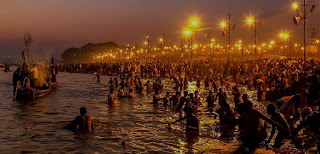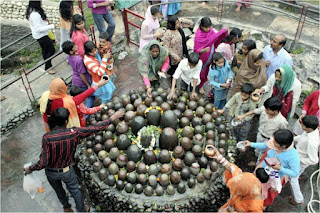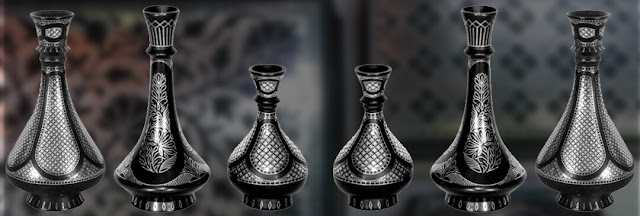It is the power of faith that can part a river, move mountains, and endure the hardships that come bundled up for being an integral part of Kumbh Mela, a congregation of millions, gathered together to be freed from the vicious earthly cycle of life and death and move towards a heavenly realm, which knows no suffering or pain. It's the mythological history of India and the sacred religious texts that bind us carnal souls to an eternal hope - things will be better, without the ever-imminent fear of them getting worse that cripples us here. "An eternal life free of sins" is the promise that comes attached with the magnificent event of Kumbh Mela. It's a promise to which millions want to be bound with, and it is this promise that has made Kumbh Mela what it is today.
Legend has it that in the mythological times, during a waging war between the demigods and demons for the possession of elixir of eternal life, a few drops of it had fallen on to four places that are today known as Prayag, Haridwar, Ujjain, and Nasik. It is believed that these drops gave mystical powers to these places. It is to make oneself gain on those powers that Kumbh Mela has been celebrated in each of the four places since long as one can remember. The normal Kumbh Mela is held every 3 years, the Ardh (half) Kumbh Mela is held every six years at Haridwar and Allahabad (Prayag) while the Purna (complete) Kumbh mela takes place every twelve years, at four places Prayag (Allahabad), Haridwar, Ujjain, and Nashik, based on planetary movements. The Maha Kumbh Mela is celebrated at Prayag after 144 years (after 12 'Purna Kumbh Melas').
Depending on what position the Sun, Moon, and Jupiter hold in that period in different zodiac signs, the venue for Kumbh Mela is decided. The calculations have been provided below for information:
Kumbh Mela at Allahabadwhen Jupiter is in Aries or Taurus and Sun and Moon are in Capricorn during the Hindu month of Magha (January-February).
Kumbh Mela at Haridwarwhen Jupiter is in Aquarius and Sun is in Aries during the Hindu month of Chaitra (March-April).
Kumbh Mela at Ujjainwhen Jupiter is in Leo and Sun is in Aries, or when all three are in Libra during the Hindu month of Vaisakha (April-May).
Kumbh Mela at Nasikwhen Sun and Jupiter are in Leo during the Hindu month of Bhadraprada (August-September).
The next Maha Kumbh Mela is set to be held in the city of Allahabad (Prayag) in the year 2013. Read the rest of the sections to know about the important dates, history and traditions of Kumbh Mela, and the tourist information.








